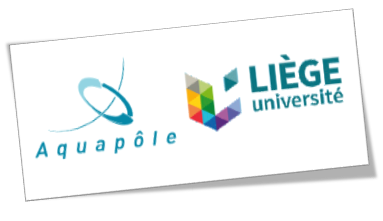|
History of Pegase Main milestones in the Pegase:
1980 Pegase Genesis
In the late 80's, three Belgian Universities (ULg-CEME for modelling, FUNDP-URBO for eutrophisation and primary production and ULB-STEP for urban and industrial releases assessment) have gathered have started a progect on assesmment of water quality. Le Pegase model has been imagined in the frame of the "modelling" part of the project. ULG-CEME (now PeGIRE laboratory of ULiege) have been carrying the developments on. 1988 First developements
The first version of Pegase has been developed between 1988 & 1991, with the support of the DGRNE (General Direction of Natural Ressources and Environnement, Public Service of Wallonia, Belgium) for modelling the Walloon Region territory. This steady state version used various digitised carthographic data as input. Considering the huge needs in computer ressoures, this first version of Pegase was initially developed on IBM mainframe, and later, on Unix Workstations (IBM RS 6000). 1993 First foreign partners and direct use by operators
Between 1993 & 1995, on request of (amon others) the French Water Agency Rhine-Meuse (AERM), a second version of Pegase has been developed. The main difference between both versions is the use of a Geographical Information System (Arc-Info, ESRI) to process the carthographic input data and present results. Pegase usage was embedded between GIS processings. This brought a large enhancement of the automation and control of the database construction, preprocessing of the data and postprocessing of the results. Around 1994-1995, the administrations using the model and the results of Pegase (DGRNE and AERM) wished to use the model themselves, on a dedicated workstation. For this purpose, a semi-graphical User Interface has been developed to ease the usage (version 3). At the same time (1994-1996), the first transnational application of Pegase has been created: In the frame of a LIFE European programme, the whole watershed of the Scheldt River has been modelled, with the support of the VMM (Flemmish Environment Agency, Flanders, Belgium), The DGRNE (Wallonia, Belgium) and the Water Agency Artois-Picardy (AEAP, France) 2000 Non-stationnary End of 1990's, the performances of workstations increased such that it was possible to use Pegase in non-stationnary mode.The version 4 of Pegase permits the modelling of multi-year non-stationnary simulations and output daily average results for watershed of several tens of thousands of km2. The performances have significantly grown in the 2000's:
2008 Under Windows In 2008, the Personal Coputers under Microsoft Windows had reached the pmower of Unix Workstations. This led to the development of the Version 5 of Pegase, under Windows, with a friendly GUI. This important migration —towards Operationnal tool— took 4 years, with the support of Pegase users in the frame of the research program Pegase Opera. It ended up with the creation of a real software suite: PegOpera. This migration happened in the structuring context of the European Water framework Directive. It aimed at meeting the requirements of the administrations for the constraints imposed by WFD 2000/60. 2012 PegOpera From 2012 on, with the delivery of the version 5.1 (first stable version) of PegOpera, the model Pegase is fully integrated within the software suite PegOpera. The history of Pegase continues here, under the name PegOpera |
||||
|
Aquapole Quartier Polytech 1 Allée de la découverte, 11 4000 Liège BELGIQUE Access Map Google Map |
About the site
|
Rejoignez-nous :
|

|



